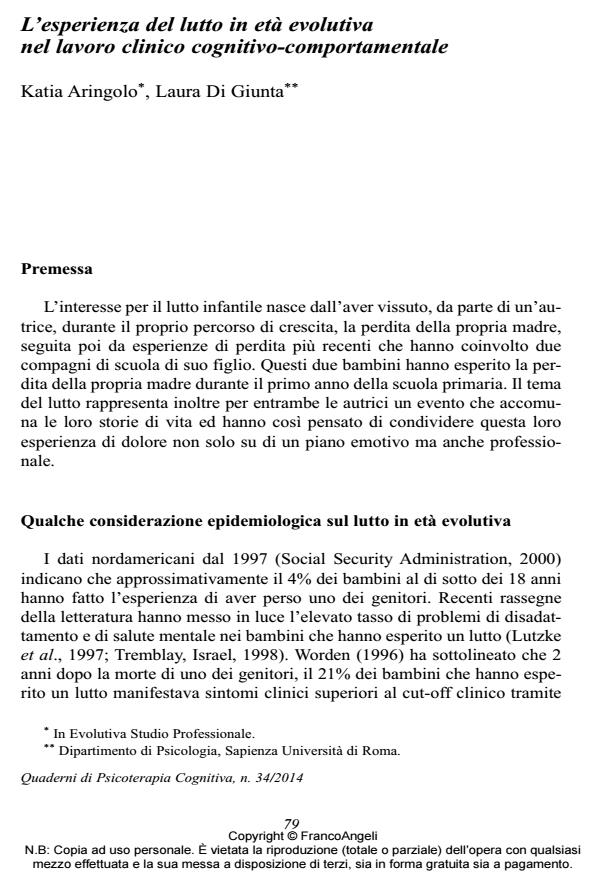The experience of bereavement in childhood in the cognitive-behavioral treatment
Journal title QUADERNI DI PSICOTERAPIA COGNITIVA
Author/s Katia Aringolo, Laura Di Giunta
Publishing Year 2014 Issue 2014/34
Language Italian Pages 26 P. 79-104 File size 152 KB
DOI 10.3280/QPC2014-034006
DOI is like a bar code for intellectual property: to have more infomation
click here
Below, you can see the article first page
If you want to buy this article in PDF format, you can do it, following the instructions to buy download credits

FrancoAngeli is member of Publishers International Linking Association, Inc (PILA), a not-for-profit association which run the CrossRef service enabling links to and from online scholarly content.
The present article highlights the main aspects of the relationship between parentally bereaved children and the survived caregivers, as well as the main aspects of the assessment and treatment of parentally bereaved children, in terms of aims, setting, therapeutic procedure, and strategies. A particular attention has been given to those specific aspects of the cognitive-behavioral treatment in childhood that can be considered as an adequate therapeutic framework to pursue the treatment of bereaved children. Moreover, an example of empirically based treatment for parentally bereaved children and adolescents (the Family Bereavement Program) is reported.
Keywords: Childhood grief, parentally bereaved children’s reactions, survived caregiver’s reactions, assessment and treatment in parentally bereaved children
- Dalla violenza assistita al lutto traumatico: i bambini orfani speciali Marvita Goffredo, Francesca Lovero, Antonella Magno, Daniela Prudente, Daniela Racanelli, Alessandra Sgaramella, Marica Urbano, Alessandra Cervinara, Alessandro Costantini, Maria Grazia Foschino Barbaro, in MALTRATTAMENTO E ABUSO ALL'INFANZIA 1/2019 pp.73
DOI: 10.3280/MAL2019-001006
Katia Aringolo, Laura Di Giunta, L’esperienza del lutto in età evolutiva nel lavoro clinico cognitivo-comportamentale in "QUADERNI DI PSICOTERAPIA COGNITIVA" 34/2014, pp 79-104, DOI: 10.3280/QPC2014-034006